How much do you love gardening? Enough to wish you had more time to enjoy it?
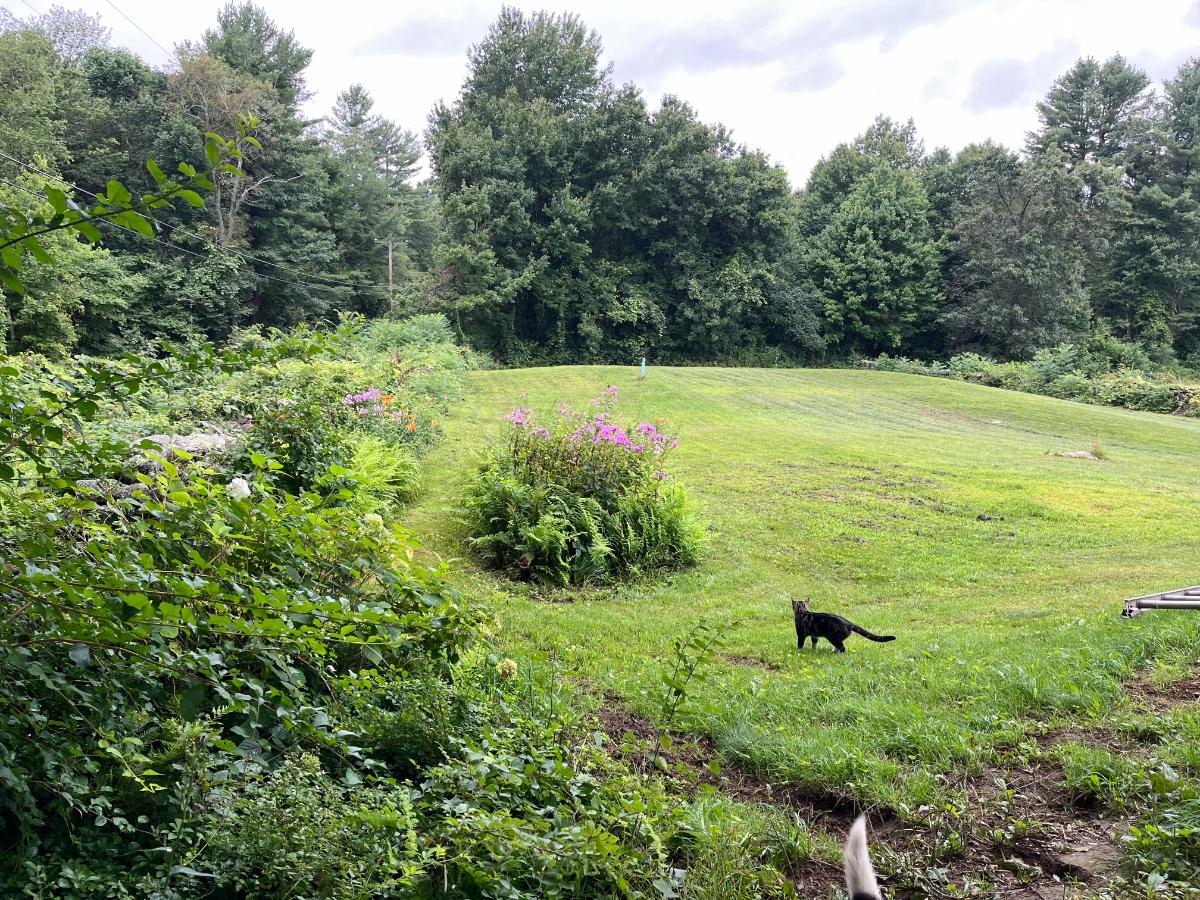
Enough to wish you didn’t have to spend so much time keeping them looking nice and thriving?
We all love the look of nice gardens and landscapes, but building and maintaining them is a different story. And it’s not always that we don’t like the work...just that there are only so many hours in a day.
There are several ways that you can build an easier, more carefree, low-maintenance garden and landscape.
Jump to:
- 12 Tips for a Low-Maintenance Landscape
- 1. Plant Perennials
- 2. Plant Drought Tolerant Plants
- 3. Plant Native Species of Plants
- 4. Fill Your Spaces
- 5. But Pay Attention to Recommended Plant Spacing
- 6. Wait, See, and Fill in More Over Time
- 7. Plant from Transplants and Started Plants
- Video: Build a Low-Maintenance Garden or Landscape!
- 8. Choose Plants that Don't Need a Lot of Pruning or Trimming
- 9. Keep Shrubs, Trees, and Bushes Well Spaced Away from Buildings, Walkways, and Other Features
- 10. Use Mulch
- 11. Living Mulch!
- 12. Embrace Easier Maintenance Methods
12 Tips for a Low-Maintenance Landscape
Have your garden and enjoy it, too, with these 12 top tips!
1. Plant Perennials
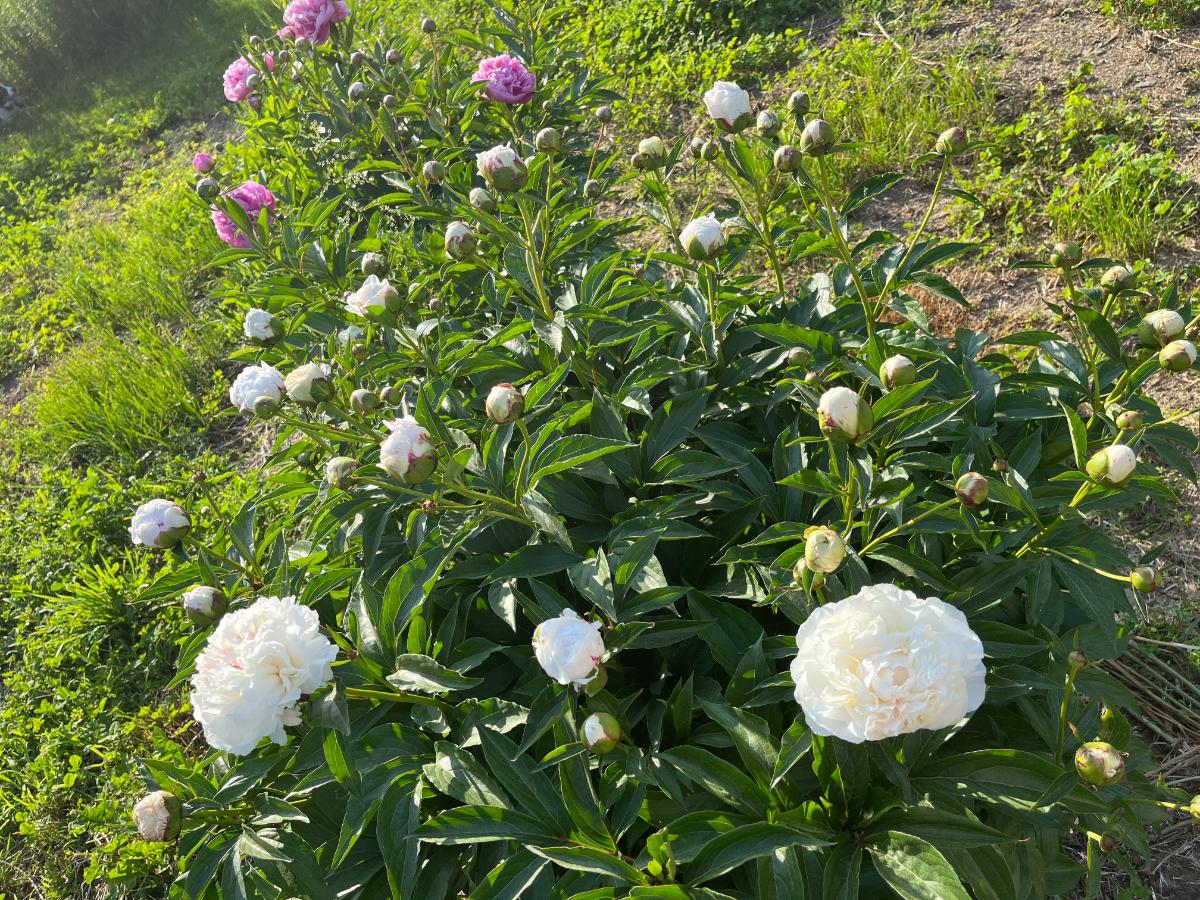
Perennials live long lives. They come back year after year and there’s no big rush to plant in the spring or dig them up in the fall.
Many gardeners shy away from perennials because their one downfall is that they are more expensive than annuals. But that’s a short-sighted notion.
Because perennials last for years (sometimes a lifetime!), they only need to be bought once in most cases. So, over time, the cost evens out to where perennials will often jump ahead.
Perennials also tend to do better in the landscape and garden with less extra care and babying (like constant watering). They root more deeply and more permanently and have less risk of dying because they are well anchored. Perennials can access moisture and nutrients from deeper in the ground.
Even if you like and want some annuals, make perennial plants the backdrop and basis for most of your ornamental garden areas. You can leave some borders and spots for a few favorite annuals. That will keep planting and maintaining them to a minimum.
Choose the right low-maintenance perennials, and they can be practically set-them-and-forget-them plants.
2. Plant Drought Tolerant Plants
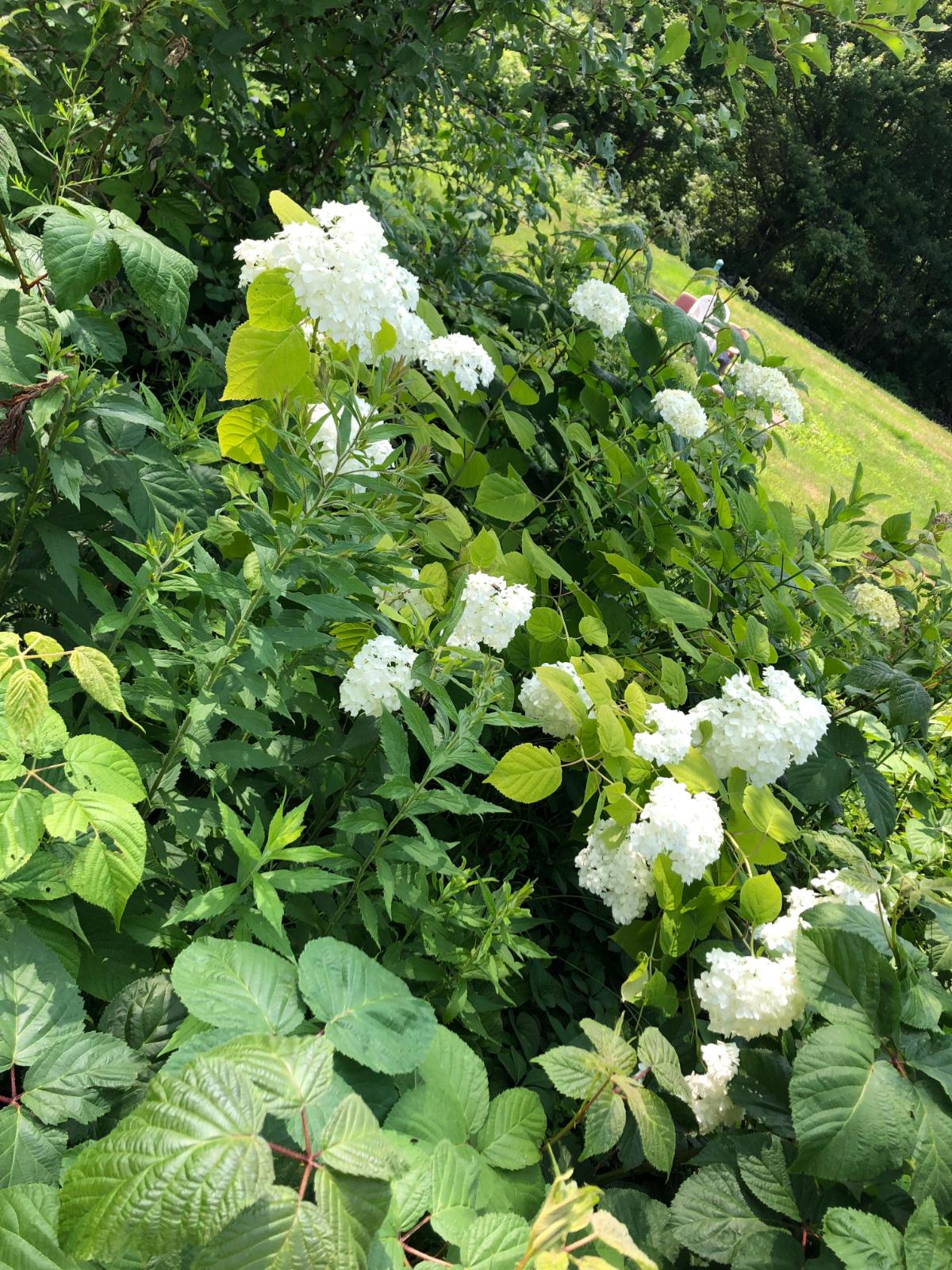
Watering is one of the more onerous tasks of maintaining a landscape or garden.
You know what plants don’t need constant watering two or more times in a week? Even if it doesn’t rain?
Drought tolerant and low-water plants.
If you’re concerned that you might get too much rain for drought tolerant plants, don’t be. Yes, it’s smart to choose wisely, but just because a plant is drought tolerant doesn’t mean it can’t take some rain, too.
It just means that if rain doesn’t come, it can survive it, at least for a couple of weeks (and running a sprinkler every couple of weeks isn't so bad, is it?
Clover, for example, is considered a drought-tolerant plant that is replacing a lot of lawns. It likes rain and will thrive, but if it doesn’t get it, it will survive for a long time without it.
3. Plant Native Species of Plants
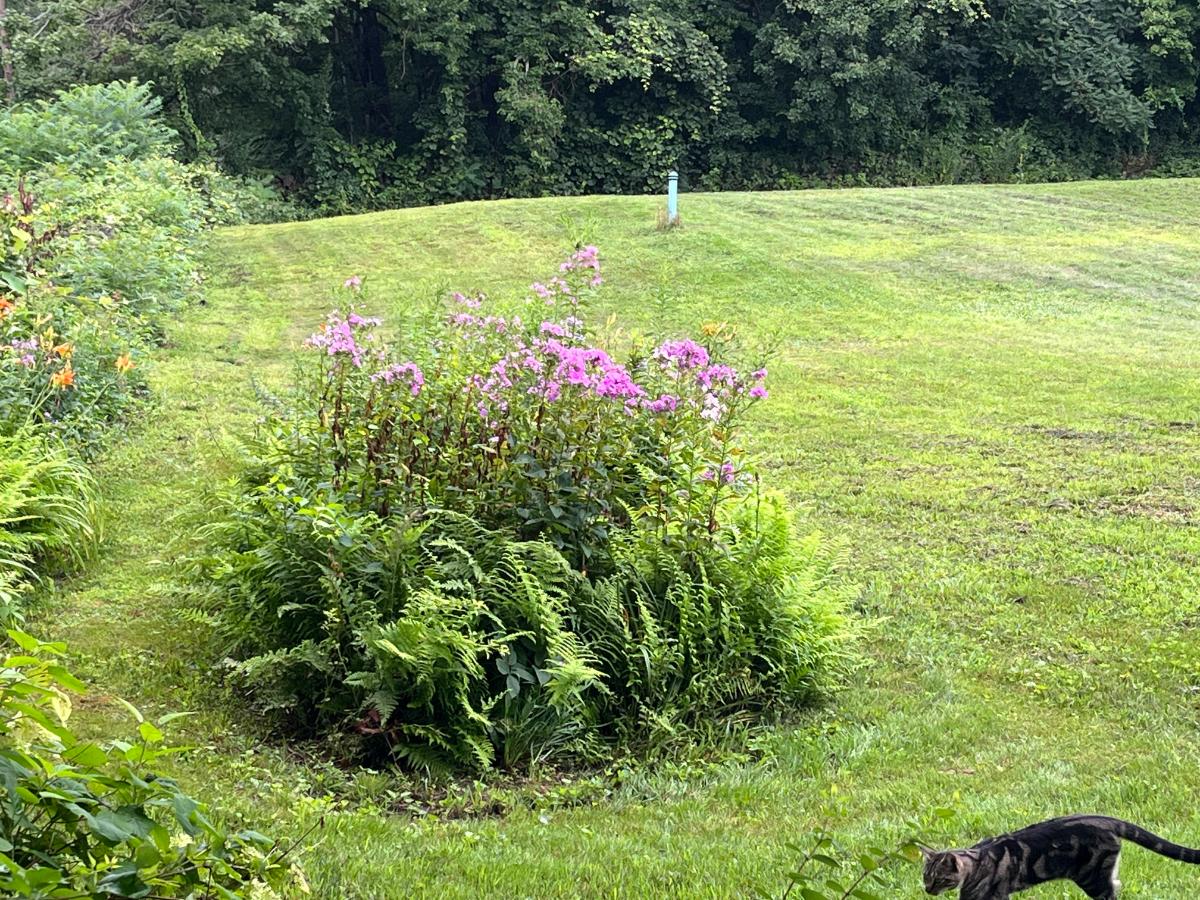
Plants that are native to where you live are better choices and make better low-maintenance yard and garden plants without needing extra care.
Why?
Because they are already adapted to your area, and you know they can take all the growing conditions your home will throw at them. Cold, warm, moisture, lack of moisture...
You won’t have to constantly baby native plants, and you won’t have to replant and replace them if they die from a winter kill or because they just were too finicky for your area.
After all, these are the plants that lived in your location before people decided to start cultivating them. They’re the plants that pop up in nature on their own. And there’s no one out in the fields and woods that are giving them extra food or water or constantly killing the native bugs that might munch on them.
Bonus! Planting these plants, even if some escape the confines of your yard or garden, won’t unnaturally upset your local ecosystem and kill off other native plants or wildlife! (Non-native invasive plant species do that.)
Plus, you’ll be providing the right sort of plant food for the local wildlife that belongs there (like insects, beneficial bugs, butterflies, and animals.)
4. Fill Your Spaces
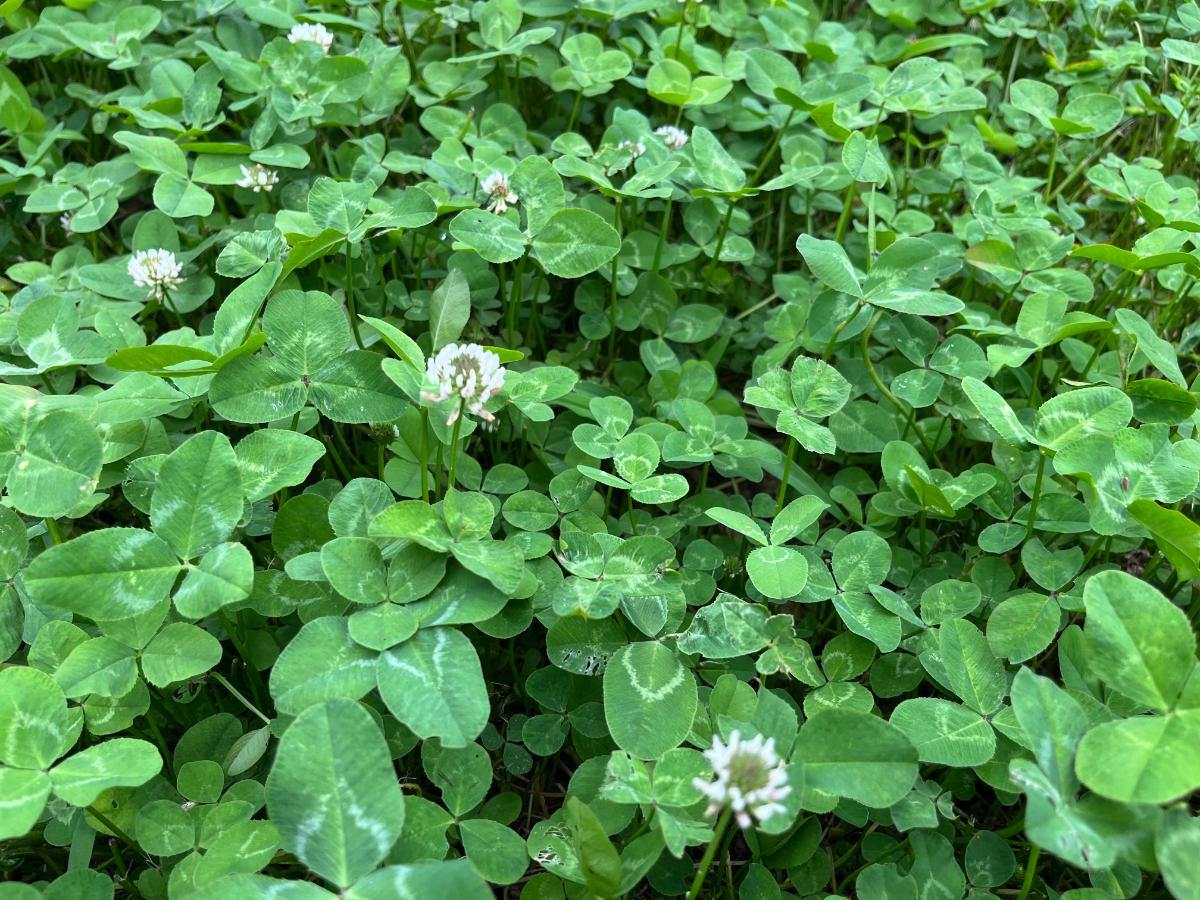
Filling your garden spaces with plants that you like – and that are low maintenance – means there won’t be room for weeds and things you don’t want there.
So, when you plant your garden and landscape areas, plant closely and create a full design; but do plant according to the plants’ needs (so you don’t create new maintenance issues for yourself – read on).
You can pack a lot of different plants and plants of different sizes and heights into a single garden space. The more ground you can cover with plants, the less ground there will be for weeds and invasive plants to come in.
Two plants can’t live in the same space. So, if you fill the space, you’re in control, and you’ll reduce the frequency of weeds. That will lower the ground maintenance you need to do (for example, you won’t need to mulch as much when the plants get bigger).
5. But Pay Attention to Recommended Plant Spacing
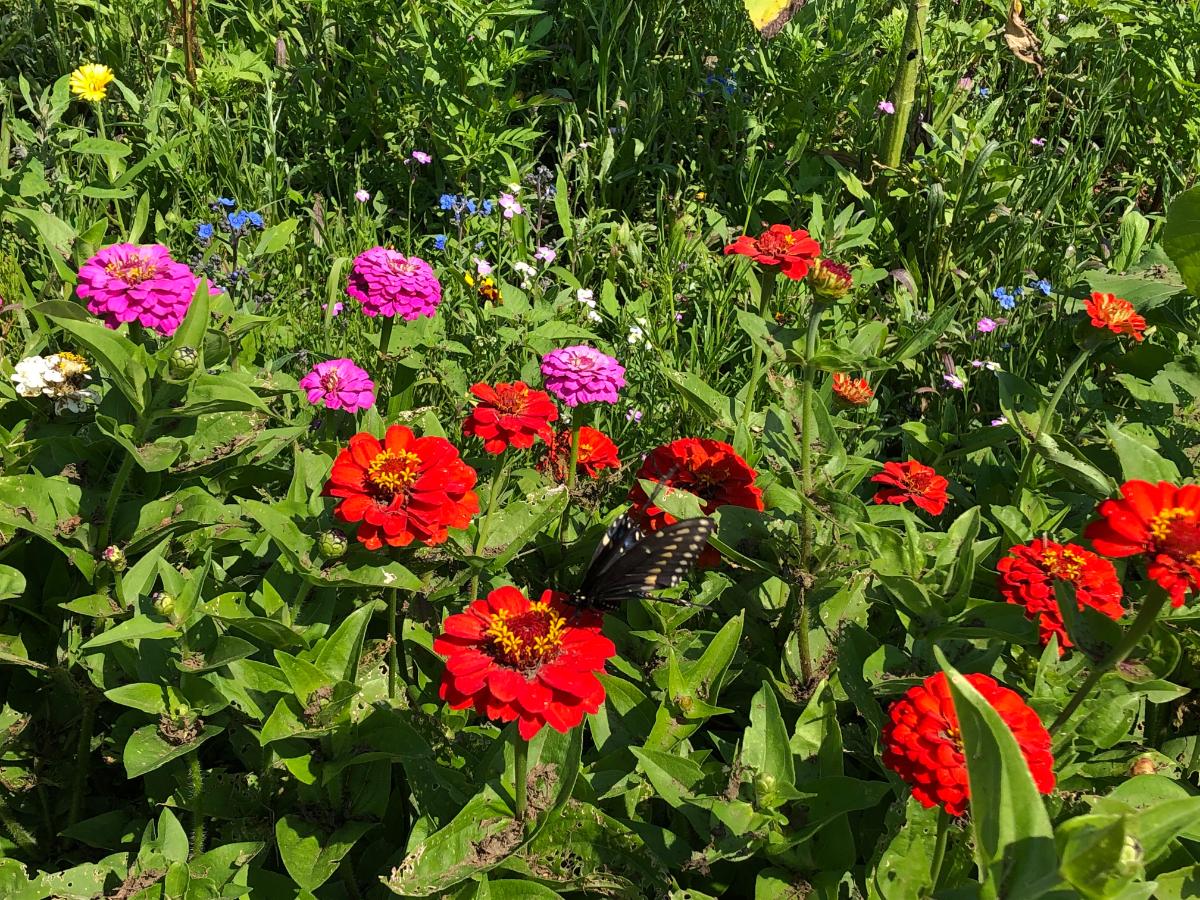
When you plant, do pay attention to recommended plant spacing because spacing is an indication of how large the plant will get in the future. It tells you how much room the plant will need as it grows.
Not sure what the right spacing is? Check the plant’s label or consult a catalog or website. And then listen to it!
When plants are small and young, they can seem like they are too far away from each other when they’re first planted. It might even look like your garden is too sparse. It won’t be long before those plants grow to their full potential, though.
Trust the plant labels and spacing recommendations. If you don’t, you’re bound to end up with plants that are planted too closely that then have high needs for additional fertilizer, water, and soil nutrients.
Close plants grow into each other, and then they need more pruning, trimming, and dividing, too. They’re also more prone to disease due to poor air circulation.
None of these are things that make for a low-maintenance garden.
6. Wait, See, and Fill in More Over Time
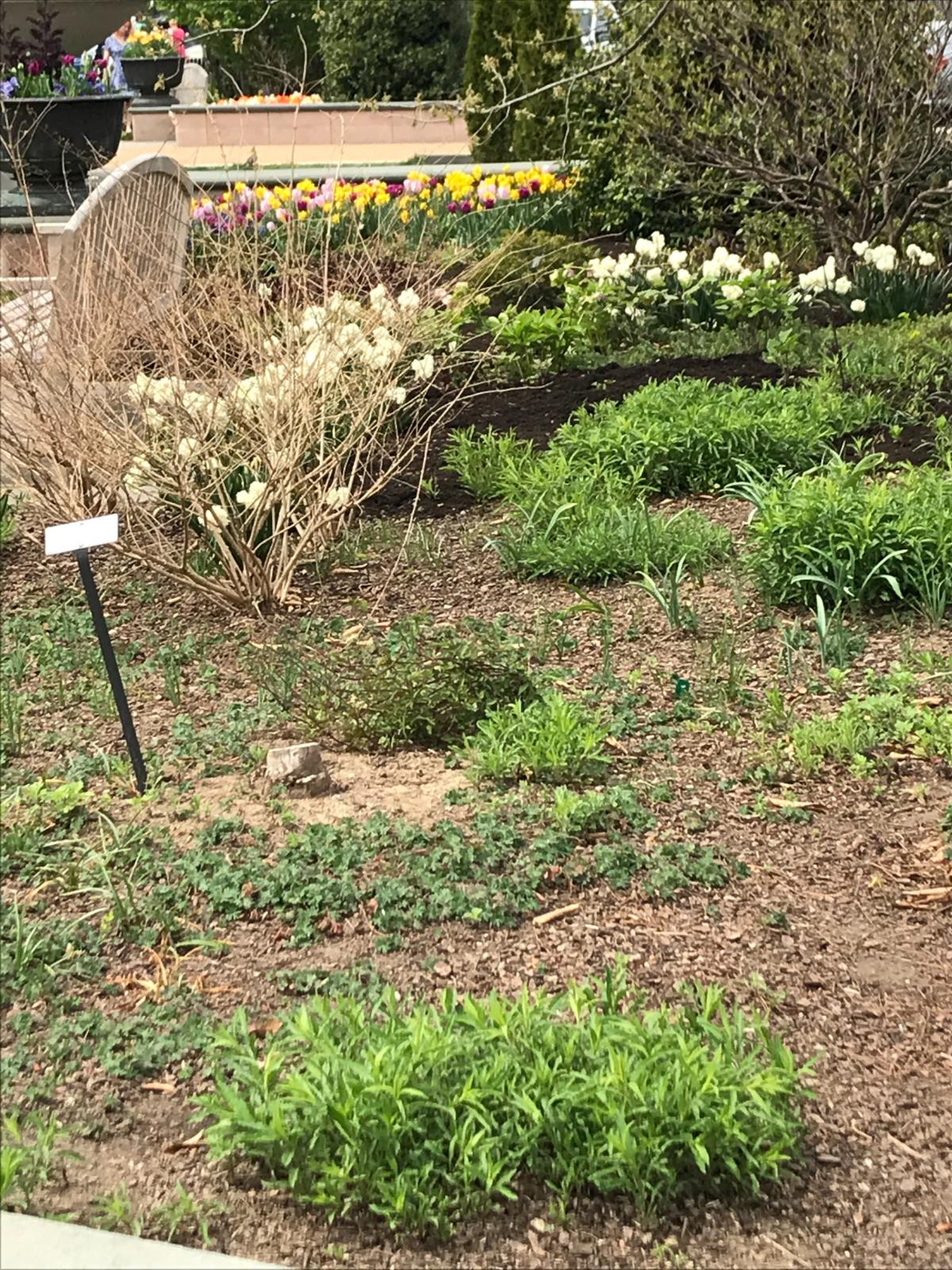
Before you go filling in all those empty spaces, take some time to wait and see.
Let your plants grow to mature height and width. Then, you’ll be able to see if those unplanted areas really are sparse and if they really need more.
You’ll be able to see if there is too much exposed ground that’s leaving room for weeds to grow, creating more maintenance than you bargained for.
But give your garden or landscape a chance first.
If you spaced and planned your plants appropriately, they should be in good shape to fill the space without overdoing it and without creating more work for you.
Keep in mind that it often takes up to two or three years for perennial plants to reach their mature size. The first year of life in a new landscape or garden space is not the best time to judge and start filling in with more plants.
7. Plant from Transplants and Started Plants
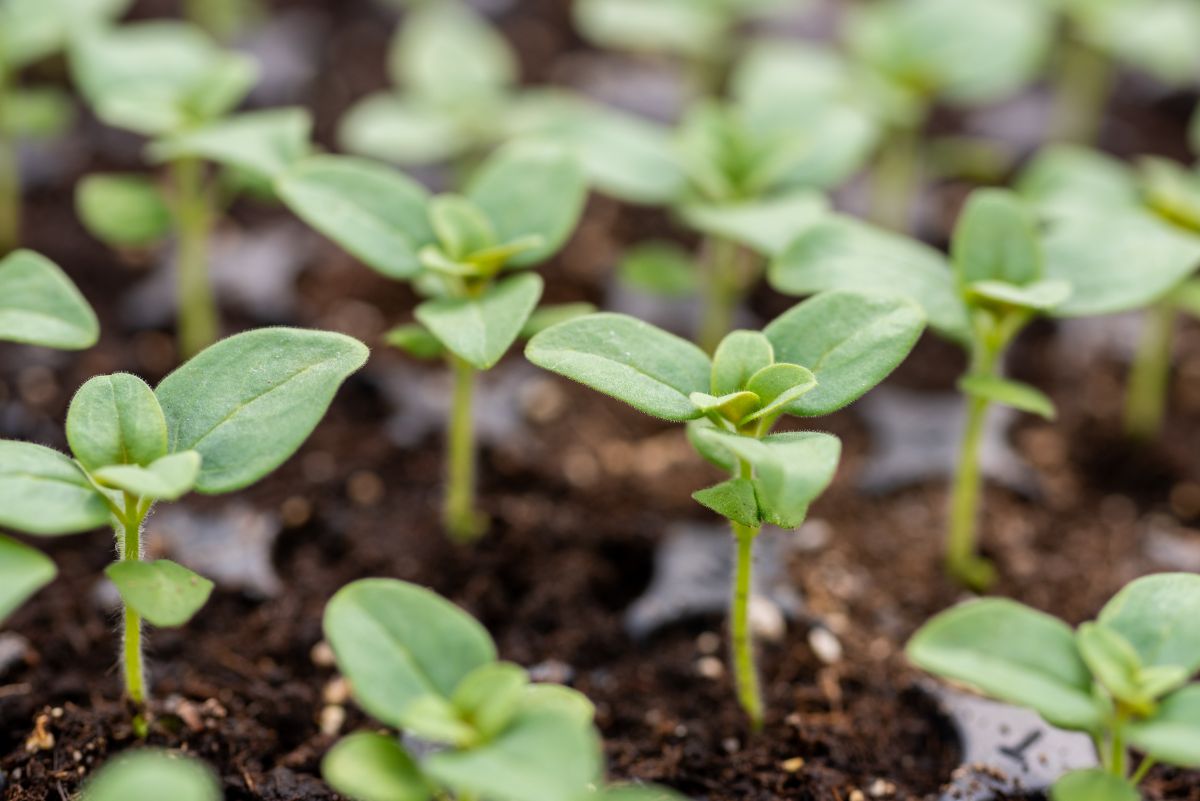
Plants that are already started in pots are much less work than planting from seed in the garden.
First of all, they’re larger and will be established more quickly.
Transplants have real, mature roots that can access moisture and nutrients more quickly, and it will be less difficult to get them to take and establish. Transplants won’t require the constant watering that seeds often do because they aren’t sitting at the surface of the soil, just an inch or two in the ground.
The other advantage to starting from transplants is that you’ll know exactly what plants are plants and not weeds.
Transplants also will start off larger than the weeds that start from seed and your transplants will be what takes off first. Large transplants will shade out and outcompete many weeds.
And... you won’t have as much bare space for weeds to get a hold in.
Video: Build a Low-Maintenance Garden or Landscape!
8. Choose Plants that Don't Need a Lot of Pruning or Trimming
Trimming and pruning take up quite a bit of time – especially if you grow things that need deadheading to stay blooming and looking good during the growing season.
If a plant only needs a bit of trimming or pruning once a year, that might not be so bad if there aren’t too many of them. But for the sake of low maintenance, try to keep those to a minimum.
There are plenty of options, including perennial options, that don’t need trimming or pruning at all.
Some options include ornamental grasses and bushes that tend to hold their shape or that you don’t mind having a bit of a wild and natural look, along with trees that grow naturally with a nice shape without your help.
9. Keep Shrubs, Trees, and Bushes Well Spaced Away from Buildings, Walkways, and Other Features
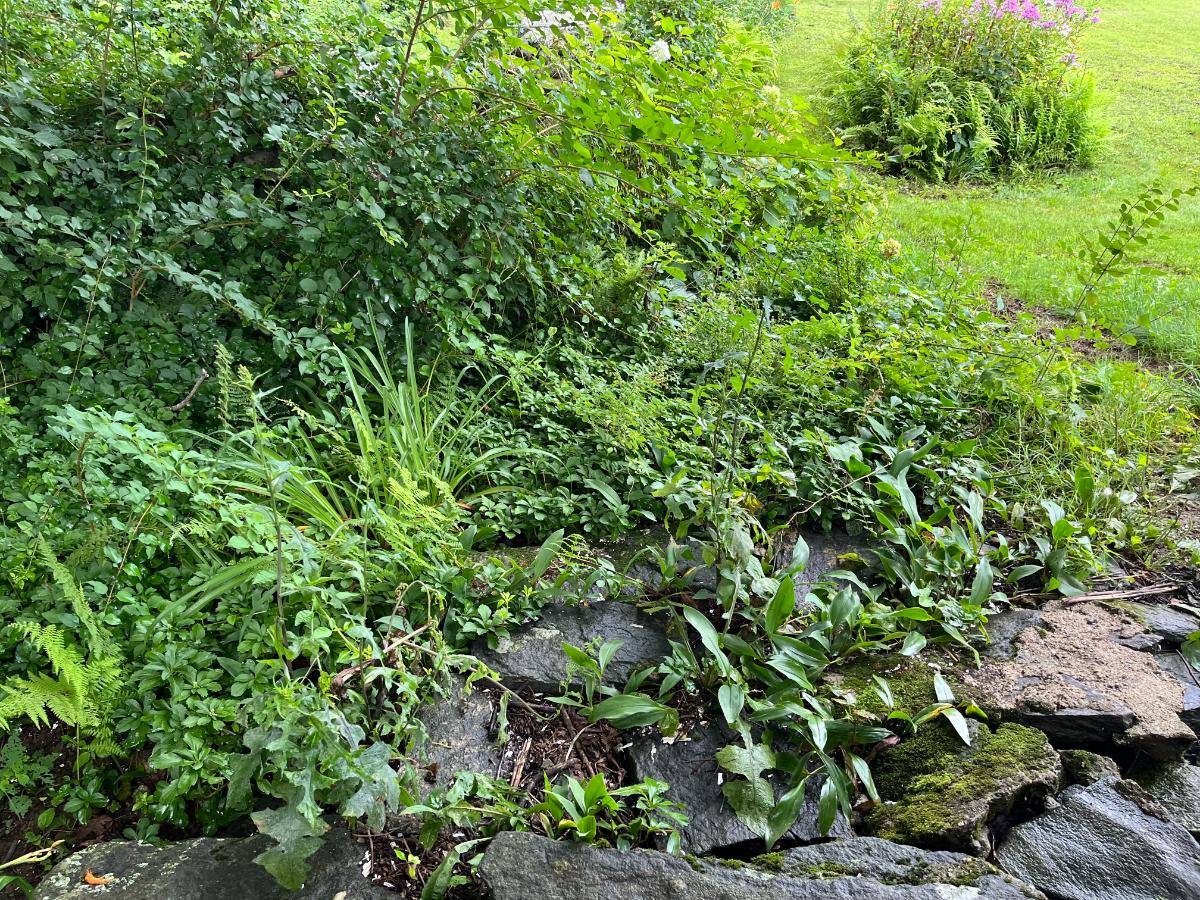
Just like when we talked about proper spacing between plants, you need to consider the mature size and proper spacing for plants that are planted along walkways and near buildings.
Even though they might look like they’re a million miles away when you first plant them, defer to the label and plant spacing instructions.
When you don’t, and you plant shrubs, bushes, or larger, expanding plants near walkways, they grow into them, hang over them, and become a general nuisance. And then you have to do a lot of cutting and maintaining to make the nuisance go away.
Planting too close to buildings can also end up with plants and shrubs that just look bad, or that don’t have enough airspace around them to keep the plant in good health. Then you have to maintain to remedy the problems.
Poor air circulation from plants that are too close to buildings can cause mildew, mold, and moss to grow and become not only a plant maintenance problem, but a building maintenance problem, too. Even more work to do!
10. Use Mulch
Mulch keeps weeds down, moderates soil temperatures, and preserves moisture in the soil.
How does this translate into less maintenance in the garden?
Because you won’t have to weed as much, if at all.
You won’t have to water very often – and maybe not ever, especially if you selected drought tolerant plants.
And plants that don’t battle constant ups and downs of hot and extremely frozen soils don’t get root damage and killed as often.
11. Living Mulch!
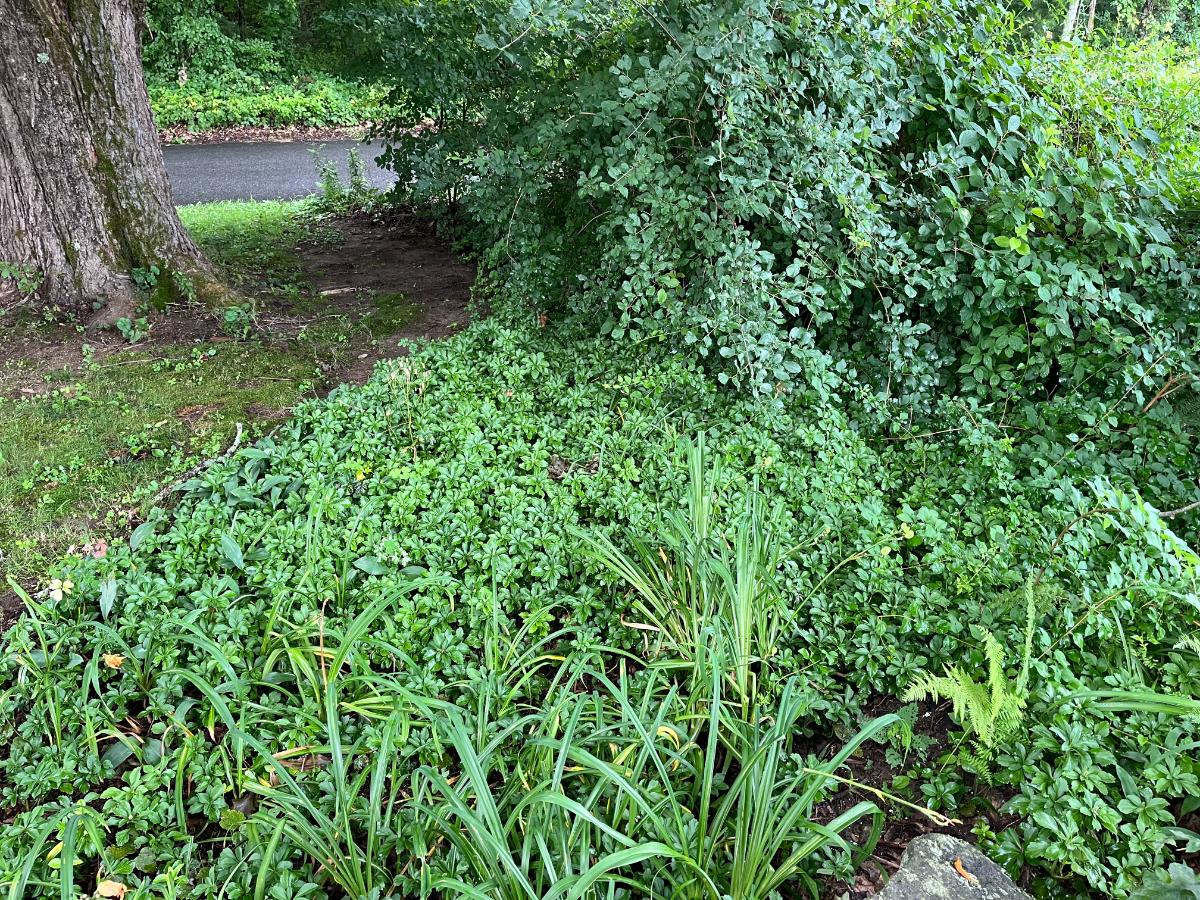
Ground-covering plants can take an area from constant weeding and maintenance down to next to none.
What’s even better is that, unlike wood chips and other organic mulches, ground covers, which are basically living mulch, don’t need to be replaced and replenished every year. They basically do that on their own.
Many groundcovers are evergreen, too, so they’ll give you some color in the winter. Because they don’t die back, spring weed seeds never have an open space or the opportunity to set in before your mulch regrows.
Good groundcovers are just always there, taking up the garden or landscape space and crowding and shading out potential weeds.
Occasionally, you may get a tenacious weed that makes it through, but pulling or cutting a few weeds out here and there isn’t much for maintenance and probably won’t need to be done very often.
12. Embrace Easier Maintenance Methods
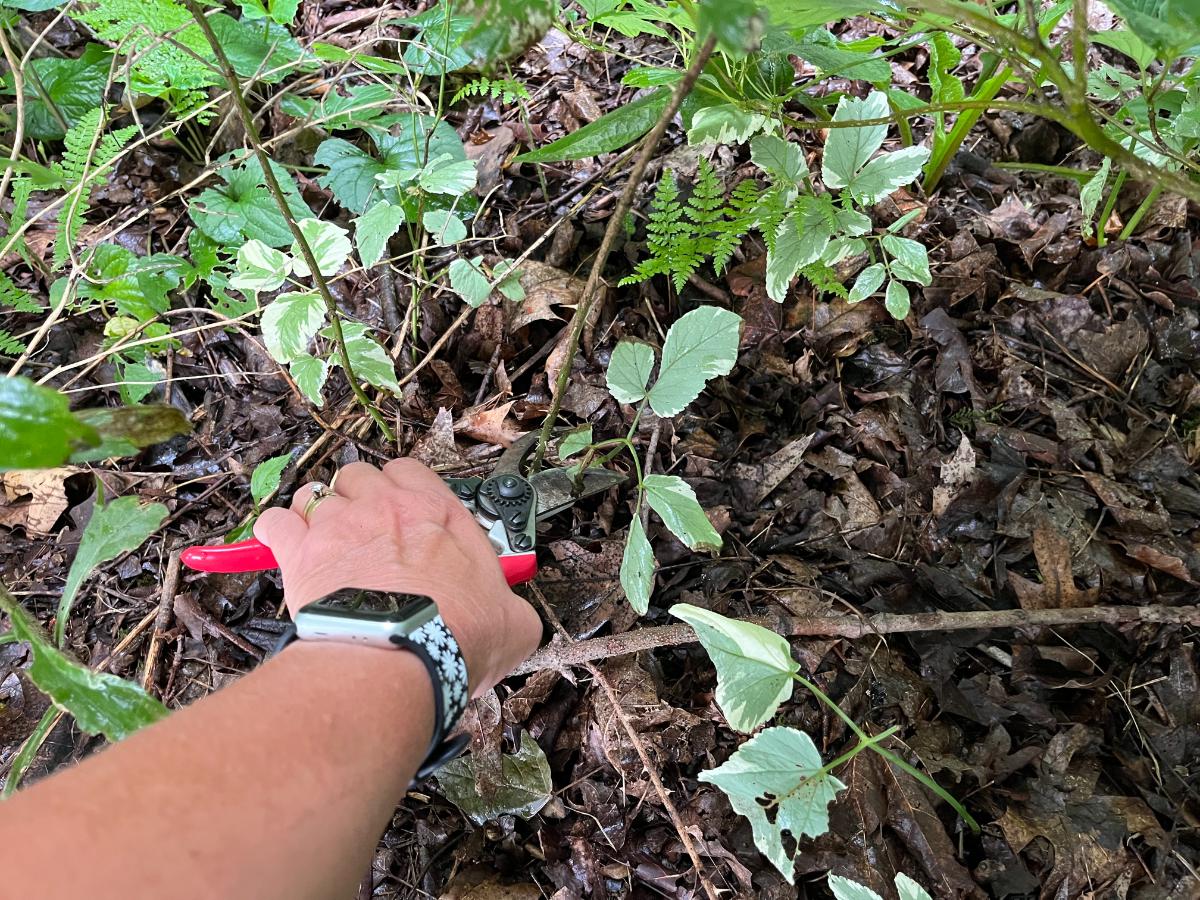
For the maintenance that you do need to do, adopt easier practices.
For example, instead of spending ridiculous amounts of time when you do cut back, trim, or thin out plants, adopt a simpler method like the chop and drop method.
With chop and drop, you cut what needs cutting or trimming and then you just lay them out in the garden, right where they fell. If you don’t like the messy look of the trimmings on the ground, just wait a week or two until growing plants hide them or kick them under larger bushes and plants such as shrubs.
There are other benefits to this sort of method that contribute to your low-maintenance gardening goals. Those trimmings and weeds will basically compost in place. They won’t need to be raked up, picked up, bagged, trashed, or composted.
And when those trimmings break down, they will feed the soil, mulch out weeds, deliver and preserve soil moisture, and replenish the organic matter in the soil that your plants are taking out of it.
That means, doing a lot of those jobs you’re trying to avoid by building up a low maintenance landscape!

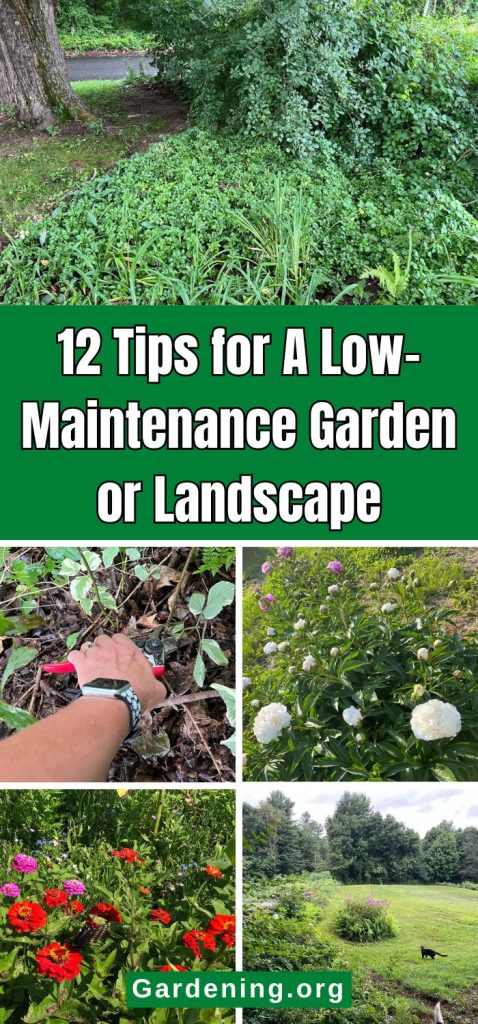
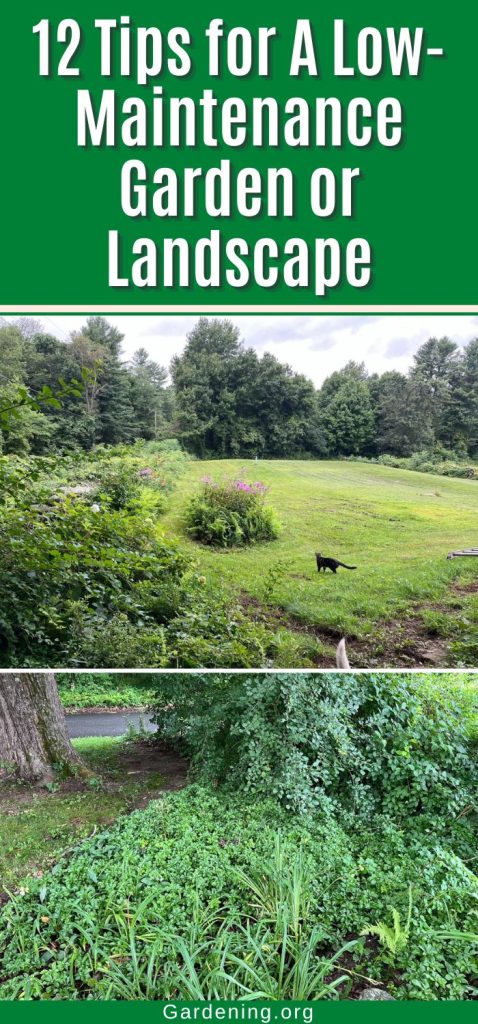
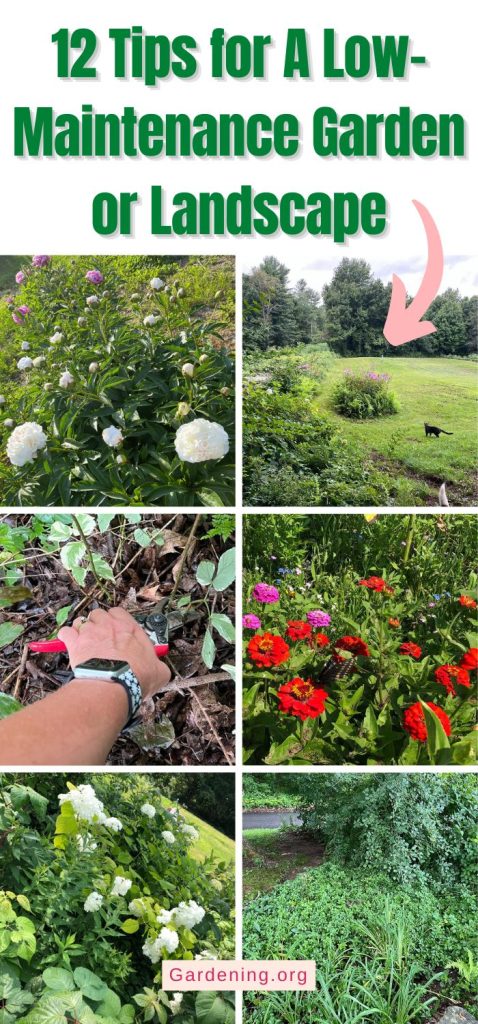
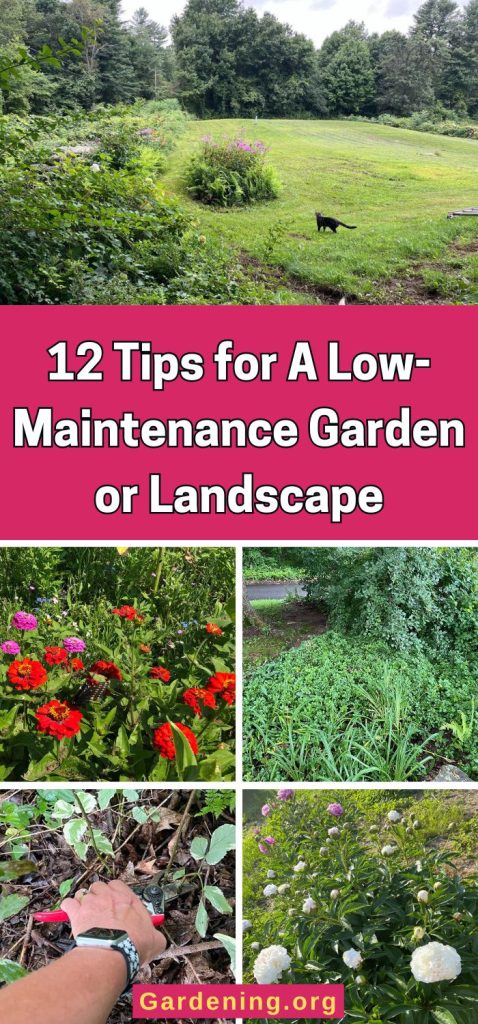
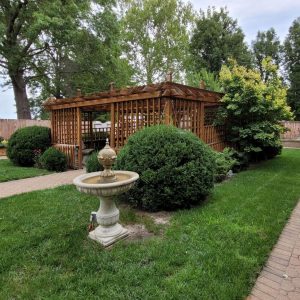
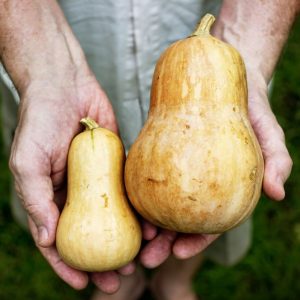
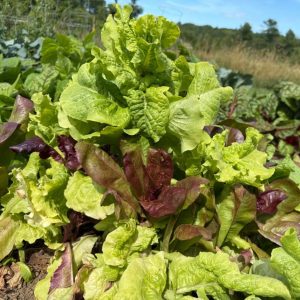
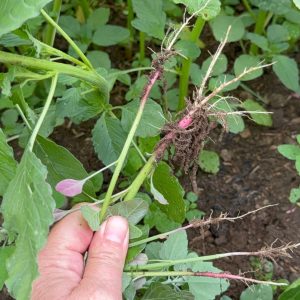
Arlene Pohlman
This was very i.